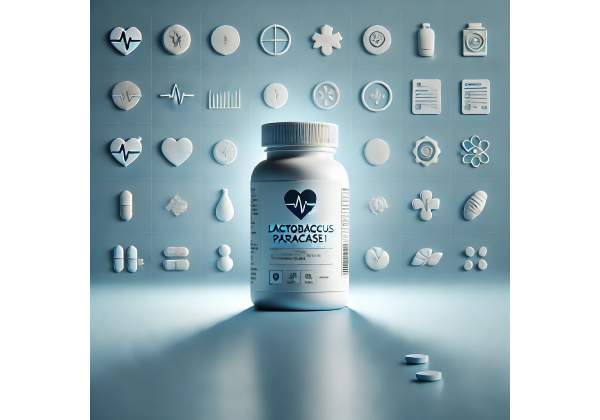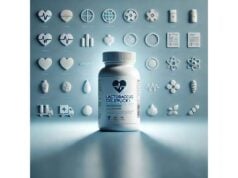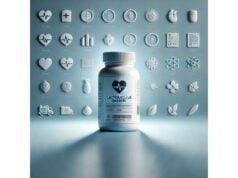
Lactobacillus paracasei is a versatile probiotic species found in fermented foods and targeted supplements. It produces lactic acid, lowers gut pH, competes with undesirable microbes, and signals to immune and epithelial cells to help maintain a steady, resilient gut environment. Human studies with named strains—such as CNCM I-1572 (also known as L. casei DG), LP-33, NCC2461 (ST11), and F19—show benefits across everyday digestive comfort, support for allergic rhinitis, post-antibiotic microbiome maintenance, and select pediatric applications. Because probiotic effects are strain-specific, results depend on matching a characterized strain, a realistic colony-forming units (CFU) dose, and a long-enough trial window. This guide explains how L. paracasei works, where the evidence is strongest, how to choose and take it, who should avoid it, and what to expect over time—so you can make a confident, evidence-aligned choice.
Key Insights
- Named strains of L. paracasei can support nasal-eye quality-of-life in seasonal allergies and help steady digestion in select groups.
- Typical supplemental intake is 1×108 to 1×1010 CFU/day for 4–12 weeks, reassessing at the end of that window.
- Most effects are modest and additive to diet, sleep, and activity; choose strain-identified products with CFU guaranteed through expiration.
- Avoid live probiotics if severely immunocompromised or if you have central venous catheters, unless cleared by your clinician.
Table of Contents
- What is Lactobacillus paracasei?
- Does it actually work?
- Benefits by use case
- How to take it correctly
- Safety and who should avoid
- Evidence roundup and dosage numbers
What is Lactobacillus paracasei?
Lactobacillus paracasei is a lactic acid–producing bacterium adapted to mucosal surfaces—primarily the gastrointestinal tract, but also the oral and nasal cavities. Like other lactic acid bacteria, it ferments carbohydrates to lactic acid, lowering local pH and making the environment less hospitable to acid-sensitive opportunists. Many strains also produce bacteriocins (short antimicrobial peptides), exopolysaccharides, and membrane vesicles that interact with neighboring microbes and host cells. Together, these features support colonization resistance (discouraging overgrowth of unwanted species), barrier integrity (reinforcing tight junction proteins and mucins), and immune calibration (maintaining a balanced, “watchful but calm” immune tone rather than chronic activation).
A crucial distinction: species versus strain. The species label (L. paracasei) tells you what tools might be present; the strain code (e.g., CNCM I-1572, LP-33, NCC2461/ST11, F19) tells you what has actually been tested in people, at what dose, and for which outcomes. Two L. paracasei products can behave very differently if they use different strains. That’s why credible labels list the full strain name and guarantee the CFU through the expiration date.
Where do you encounter L. paracasei? It occurs naturally in some fermented foods and is added to others for flavor, texture, or health purposes. In supplements, it appears as a single-strain product or in multi-strain blends, often paired with Bifidobacterium species. In both foods and supplements, survivability through the stomach and interaction with the gut lining vary by strain, formulation, and whether you take it with food.
Mechanistically, L. paracasei can:
- Acidify the niche with lactic acid, dampening growth of competing microbes.
- Release bacteriocins and exopolysaccharides that limit overgrowth and help biofilm adhesion to mucus (in beneficial ways).
- Signal to the epithelium to bolster tight junctions and mucin, supporting a well-sealed barrier.
- Modulate immune cells (dendritic cells, macrophages, T cells), nudging cytokines toward balance and potentially increasing secretory IgA on mucosal surfaces.
These mechanisms explain why benefits cluster in allergy support, everyday digestive comfort, and post-antibiotic steadiness, with growing data in pediatric nutrition and microbiome maintenance.
Does it actually work?
In short: Yes—if you match the strain, dose, and timing to the goal. The strongest human evidence for L. paracasei sits in three areas: allergic rhinitis support, gastrointestinal modulation (including microbiome changes), and pediatric nutrition. Results are generally modest but meaningful when used consistently and paired with sensible lifestyle steps.
Allergic rhinitis (seasonal or perennial). Several controlled trials using named strains (notably LP-33 and NCC2461/ST11) have shown improvements in quality-of-life scores and specific symptom domains (commonly ocular symptoms) over a few weeks, especially during pollen season while participants also used standard antihistamines. Not all trials are positive across every outcome, and differences in pollen exposure, strain, and timing explain mixed results. The overall picture: supportive, incremental benefit, best as an adjunct to standard care.
Digestive comfort and immune-metabolic signaling. In adults with irritable bowel syndrome (IBS), CNCM I-1572 has been shown to modulate the microbiome (e.g., shifts in Ruminococcus groups), increase short-chain fatty acids (acetate, butyrate), and reduce pro-inflammatory cytokines, even when symptom endpoints don’t always reach statistical significance. Translation: it can nudge the gut ecosystem and immune tone in a favorable direction, which some users feel as steadier stools or less reactivity to everyday dietary triggers.
Pediatric applications. In infants, F19 has been used in formula to evaluate growth, tolerance, and infection rates with good safety reporting. In older children, CNCM I-1572 (L. casei DG) demonstrates survival through the GI tract and short-term persistence after dosing—practical proof that viable cells reach the lower gut. Pediatric outcomes depend on the specific context (nutrition vs. symptom reduction) and always warrant clinician guidance.
What L. paracasei is not: It’s not a cure-all, a substitute for guideline-directed allergy or GI care, or a primary therapy for serious disease. Think of it as a low-risk, potentially beneficial adjunct, especially for people who value food-first and microbiome-aware strategies.
How fast will you notice an effect?
- Allergy support: expect 2–5 weeks during the exposure season for quality-of-life signals to emerge.
- Digestive comfort/microbiome steadiness: evaluate after 4–8 weeks of daily use.
- Pediatric nutrition: outcomes are tracked over months, with safety and growth as primary endpoints.
If nothing changes by the end of a full trial window (and adherence was good), it’s reasonable to switch strains or reconsider whether a different probiotic category better fits your goal.
Benefits by use case
1) Seasonal allergy quality-of-life (adjunct)
- Best for: Adults with pollen-related symptoms who already use antihistamines and nasal hygiene.
- What to look for: Strain-identified products such as LP-33 or NCC2461/ST11 with documented dosing and duration.
- Expected benefit: Improved rhinoconjunctivitis quality-of-life, particularly ocular symptoms (itching, tearing) in some trials.
- How to use: Begin 2–4 weeks before peak season; continue throughout exposure. Keep standard therapy in place.
2) Everyday digestive comfort
- Best for: Adults with bloating, variable stool form, or “sensitive digestion” without a diagnosis requiring specialty care.
- What to look for: CNCM I-1572 or multi-strain blends that include L. paracasei plus Bifidobacterium species.
- Expected benefit: Subtle but noticeable steadiness—fewer swing days, gentler post-meal sensations—linked to short-chain fatty acid shifts and lower mucosal immune activation.
- How to use: Take with meals daily for 8–12 weeks; track one objective measure (e.g., Bristol stool chart) and one subjective comfort score weekly.
3) Post-antibiotic or post-travel microbiome maintenance
- Best for: People rebounding from short courses of antibiotics or disruptive travel.
- What to look for: A shelf-stable or refrigerated L. paracasei product with CFU guaranteed through expiration.
- Expected benefit: More predictable stool form and frequency over 2–4 weeks; effects fade when you stop (normal for most probiotics).
- How to use: If overlapping antibiotics, separate by 2–3 hours; continue 1–2 weeks after the last dose.
4) Pediatric nutrition and tolerance
- Best for: Formula-fed infants using clinician-approved products and older children who need gentle digestive support.
- What to look for: Infant formulas with F19 under pediatric supervision; child-friendly doses of CNCM I-1572 in older children where appropriate.
- Expected benefit: Good tolerance and safety; in select contexts, shifts in infection rates or microbiome profiles have been observed.
- How to use: Always discuss with a pediatric clinician. Track growth, tolerance, and stool patterns; avoid unverified products.
5) Immune balance in the “upper-airway-gut” loop
- Best for: People who notice seasonal triggers that affect both nasal passages and digestion.
- What to look for: Strains with allergy data (LP-33, NCC2461) or gut-immune data (CNCM I-1572).
- Expected benefit: A calmer mucosal tone—not zero symptoms, but fewer “flare” days when paired with sleep, hydration, and saline rinses.
Across use cases, set expectations around incremental improvements, not dramatic reversals. The most reliable gains come when probiotics are stacked with fundamentals: fiber-rich meals, sodium awareness (for those monitoring blood pressure), regular movement, and adequate sleep.
How to take it correctly
Choose the right strain for your goal
- Allergy support: Seek LP-33 or NCC2461/ST11; start before and continue during exposure seasons.
- Digestive comfort or post-antibiotic steadiness: Consider CNCM I-1572 as a single strain or within a thoughtful multi-strain blend.
- Pediatric nutrition: If considering F19 in infant formula, do so only under pediatric guidance.
Dose and timing
- Adults (general): Start at 1×108 to 1×109 CFU/day; if needed and well tolerated, increase toward 1×1010 CFU/day.
- With meals: Take with the first bites or within 30 minutes before eating to buffer stomach acid.
- Consistency: Use daily for 4–12 weeks before judging the effect. Probiotics work while you take them.
Form and storage
- Capsules or sachets: Convenient and dose-known; some offer delayed-release technology.
- Refrigeration: Follow the label—heat and humidity reduce viability.
- Quality signals: Look for CFU guaranteed through expiration, a strain code, and third-party testing (certificate of analysis on request).
Combining with other steps
- Diet: Add fermentable fibers gradually (oats, beans, whole grains) to support short-chain fatty acid production.
- Antibiotics: If approved by your clinician, separate doses by 2–3 hours and continue 1–2 weeks after finishing antibiotics.
- Prebiotics: Start low and go slow to minimize gas; titrate every few days based on comfort.
Troubleshooting
- Week-one gas or cramping: Lower the dose or take every other day for a week; most people acclimate by days 7–10.
- No change by week 8–12: Verify strain, CFU at expiration, and adherence. Consider switching to a different L. paracasei strain or another probiotic category aligned with your goal.
- Dairy sensitivity: Many supplements are dairy-free; check excipients. If using fermented foods, choose lactose-free options if needed.
Simple tracking plan
- Pick one objective marker (e.g., stool form, days with antihistamine rescue) and one subjective marker (comfort score 1–10).
- Record weekly for the full trial window; adjust based on trends, not single days.
Safety and who should avoid
General tolerability
L. paracasei is well tolerated for most healthy adults and older children at common doses. Early side effects—mild gas, bloating, or changes in stool form—are usually transient and ease as the gut adapts or with a lower starting dose. In clinical trials and pediatric studies, adverse events have typically been mild and self-limited.
Who should avoid or seek medical guidance first
- Severely immunocompromised individuals (e.g., profound neutropenia, post-transplant immunosuppression, uncontrolled HIV).
- People with central venous catheters or prosthetic heart valves due to the unacceptable consequence of any bloodstream translocation.
- Critically ill patients or those immediately post-abdominal surgery, unless the probiotic is part of a supervised protocol.
- Infants and toddlers: Use only pediatric-validated products and doses directed by a clinician.
- Anyone with allergies to excipients used in certain products (e.g., dairy proteins, soy).
Medication and condition considerations
- Antibiotics: If permitted by your prescriber, separate dosing by 2–3 hours; continue 1–2 weeks after the course to support recovery.
- Acid-suppressing therapy (PPIs): Lower stomach acid can increase probiotic survival; this can be helpful but may amplify early gas.
- Allergy medications: When using L. paracasei for allergic rhinitis, maintain standard therapies and monitor quality-of-life scores for incremental gains.
When to stop and seek care
Stop the product and contact a clinician if you develop fever, chills, severe abdominal pain, blood in stool, or symptoms that escalate rather than settle. These are rare but warrant prompt evaluation.
Quality reduces risk
Choose brands that disclose:
- Strain identity (e.g., L. paracasei CNCM I-1572, LP-33, NCC2461, F19).
- CFU at expiration, not just at manufacture.
- Storage requirements and third-party testing.
- Lot numbers and clear contact information.
Bottom line: for most healthy users, L. paracasei is a low-risk adjunct. Safety hinges on health status, product quality, and realistic expectations built around modest, additive effects.
Evidence roundup and dosage numbers
Allergic rhinitis
The LP-33 strain improved rhinoconjunctivitis quality-of-life versus placebo in adults already on antihistamines over a five-week period during grass pollen season. Ocular symptoms (itching, tearing) showed the most consistent improvements. Trials with NCC2461/ST11 show mixed results—some symptom relief in controlled settings, and neutral findings in field studies—highlighting how exposure levels and timing influence outcomes. The pattern suggests adjunctive benefit for quality-of-life rather than a full replacement for standard therapy.
Digestive comfort and microbiome modulation
In a pilot randomized, double-blind, cross-over trial, CNCM I-1572 did not significantly change the primary symptom endpoints in IBS but shifted the microbiome (notably reducing specific Ruminococcus taxa), increased short-chain fatty acids (acetate and butyrate), and lowered immune activation markers (e.g., interleukin-15). These mechanistic changes align with user-reported steadier stools and less reactivity during daily life, particularly when combined with fiber-forward meals.
Pediatric evidence
Infant formula supplemented with F19 has been tested in large randomized trials assessing growth, infection rates, and tolerance, with good safety reporting. In older children, CNCM I-1572 has been shown to survive gastrointestinal transit and persist briefly after dosing—proof that viable cells reach the lower gut in real-world dosing.
Practical dosing ranges
- Adults: 1×108 to 1×1010 CFU/day, with 8–12 weeks as a fair evaluation window. New users can start on the lower end and titrate.
- Children: Use age-appropriate products; many pediatric trials use ~1×109 CFU/day per strain for short windows, always under clinical guidance.
- Timing: With meals (or within 30 minutes before) to improve survival through the stomach.
- Overlap with antibiotics: Separate by 2–3 hours; continue 1–2 weeks post-course if approved.
Who is most likely to benefit?
- Adults seeking adjunct relief of seasonal allergy burden.
- People wanting microbiome steadiness after disruptions or looking for a gentle digestive nudge.
- Families using pediatric-validated products for tolerance and safety under clinician oversight.
Decision framework
- Define your main outcome (allergy QOL, digestive steadiness, pediatric tolerance).
- Choose a strain that matches (LP-33 or NCC2461/ST11 for allergy; CNCM I-1572 for gut-immune modulation; F19 in pediatric nutrition).
- Commit to daily use for a full trial window.
- Track one objective and one subjective metric weekly.
- If results are flat, switch strains or adjust the plan (diet, fiber, timing).
References
- Efficacy and safety of the probiotic Lactobacillus paracasei LP-33 in allergic rhinitis: a double-blind, randomized, placebo-controlled trial (GA2LEN Study) 2014 (RCT)
- Effect of Lactobacillus paracasei CNCM I-1572 on symptoms, gut microbiota, short chain fatty acids, and immune activation in patients with irritable bowel syndrome: A pilot randomized clinical trial 2018 (RCT)
- Feeding Infants Formula With Probiotics or Milk Fat Globule Membrane: A Double-Blind, Randomized Controlled Trial 2019 (RCT)
- Survival of L. casei DG® (Lactobacillus paracasei CNCMI1572) in the gastrointestinal tract of a healthy paediatric population 2019 (Human survivability study)
- The Efficacy and Safety of Probiotics for Allergic Rhinitis: A Systematic Review and Meta-Analysis 2022 (Systematic Review)
Disclaimer
This article is for educational purposes and does not replace professional medical advice, diagnosis, or treatment. Always talk with a qualified clinician before starting, stopping, or combining probiotics with medications—especially if you are immunocompromised, pregnant or breastfeeding, caring for an infant, or managing chronic conditions. Stop use and seek medical care if you develop fever, chills, severe abdominal pain, blood in stool, or any symptoms that escalate.
If this guide helped you, please consider sharing it on Facebook, X (formerly Twitter), or your favorite platform, and follow us for more evidence-based explainers. Your support helps us continue producing high-quality, people-first content.










